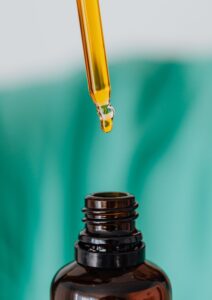 It has been on the cards for almost a decade, but it looks like the increase from 26 to 90 fragrance allergens for which compulsory declaration on cosmetics will be required has, finally, moved a step closer.
It has been on the cards for almost a decade, but it looks like the increase from 26 to 90 fragrance allergens for which compulsory declaration on cosmetics will be required has, finally, moved a step closer.
This all started in 2012, when the EU’s Scientific Committee for Consumer Safety published an opinion paper which stated that consumers should be informed about additional fragrance ingredients in cosmetic products, on top of the 26 already subject to individual labelling.
Anyone working with cosmetics — or consumers with fragrance allergies — will be familiar with many of the 26, which are usually listed last in any INCI listing of ingredients in virtually all fragranced products, especially those with essential oils, which are usually (but not always) rich in one or more of the natural allergens, such as limonene, geraniol, eugenol and linalool. There are also artificial ones, such as alpha methyl ionone, commonly found in mass-market perfumes and eaux de toilette.
Just before Christmas, the EU Commission published a report, following on from a public consultation, called Impact Assessment Study on Fragrance Labelling on Cosmetic Products. You can read both the Executive Summary and the Full Report by clicking here.
In a nutshell, their key statement on the 60+ extra allergens is pretty blunt:
Precise information regarding the fragrance allergens should be provided to consumers is needed with no delay.
Naturally, as the EU do note, this will present enormous problems.
First, how much space is available on most cosmetics for potentially dozens of new allergens? Not a lot, if we’re looking at small bottles of facial serums, on which the ingredients are sometimes already squashed or difficult to make out.
One possible solution being mooted is ‘e-labelling’, either online, or through Q-codes, barcodes or a combination of all. But which? And what about people who shun technology?
A further point, which the EU don’t mention, is that all brands will have to do some additional complicated calculations in order to work out the percentages of additional fragrance allergens in their cosmetics to find out whether they reach the declarable threshold levels. Or — more likely — they will have to hire their cosmetic assessors to do the work and issue new reports and recommendations. Fine for larger brands; perhaps not so fine, nor affordable, for smaller brands with multiple long-standing, established products that may slip out of compliance.
Some may choose to reformulate the fragrance content downwards, in order to keep their fragrance allergen content lower — and you could argue that this could help those with fragrance allergies. The additional declaration of fragrance allergens such as menthol, vanillin and terpinolene will be very useful to those with sensitivities to those allergens outside the current ‘top 26’. But this will still mean more work for formulators and manufacturers.
As far as the UK is concerned, it will be interesting to see whether we continue to align ourselves with EU cosmetic regulation, or begin a post-Brexit divergence.
The good news, for those groaning at the prospect of the expense and work involved, is this:
As regards transitional periods, taking into consideration that extending the number of mandatory fragrance allergens to be labelled places significant compliance costs on businesses, we recommend that the European Commission …. consider a transition period of at least three to five years, allowing small and medium sized businesses to adequately prepare and ensure that product withdrawals and disposals are minimised. Longer transitional periods would also minimise environmental costs linked to withdrawal of incompliant packages
But we at Skins Matter do wonder whether the increase to almost 100 fragrance allergens may ‘switch off’ some people’s attention for the allergens, and for cosmetic allergies in general. With so many allergens to keep track of, I wonder how many people will simply throw in the towel? In trying to do their best for people with allergic contact dermatitis — which we of course support — are legislators running the risk of ending up in an unholy confusing mess ….?
What do you think of the proposals? Will it effect you, or your business? Or are you someone with fragrance allergies for whom this will be a godsend?
Pingback: Linalool in skin care products can cause eczema and allergy | What Allergy Blog